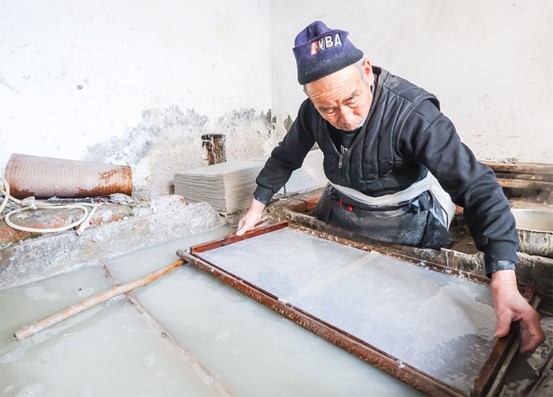Ancient paper-making flourishes in Shandong
The tradition of Luzhuang paper-making has been passed down for hundreds of generations in historic Yanggu county, located in East China's Shandong province.
The precious craft was invented by Cai Lun – a eunuch who served at court during the Eastern Han Dynasty (25-220). He used his position to perfect the art of papermaking and it holds significant cultural value for the local community.
Cai's paper-making technology was first taught in Yanggu and he later became known as the inventor of ancient paper and the papermaking process. His paper was also named guzhi – as gu symbolizes Yanggu and zhi means paper in Chinese.
The well where the master taught his craft, called the Cai Lun Well, is still well preserved in Luzhuang village, in Shifo town in Yanggu county.
The paper-making process in Luzhuang closely follows the original method: beating pulp, laying down materials and copying paper. In the past, the raw materials had to be treated using stone milling, which was a labor-intensive process.

An old craftsman practices his craft deftly. [Photo by Li Zhongyu for chinadaily.com.cn]
However, with the advancement of technology, pulp can now be easily and evenly beaten using a pulping machine, saving a significant amount of manpower.
To brighten up the laborious task of beating pulp, the ancestors created a rhythmic beating song called zhuanzhucheng.
The song was sung in various provinces across China, with the lyrics incorporating the names and geographic locations of different areas. The song lasts for about 10 minutes, providing a rhythm for the pulp-beating process.
In Luzhuang village, the facades of houses are adorned with one-and-a-half-meter-high lime walls, which are flat and perfect for sun-drying the paper.
During the peak selling season, the walls become a unique streetscape, festooned with the colorful paper. (Edited by Jin Yongxue)








